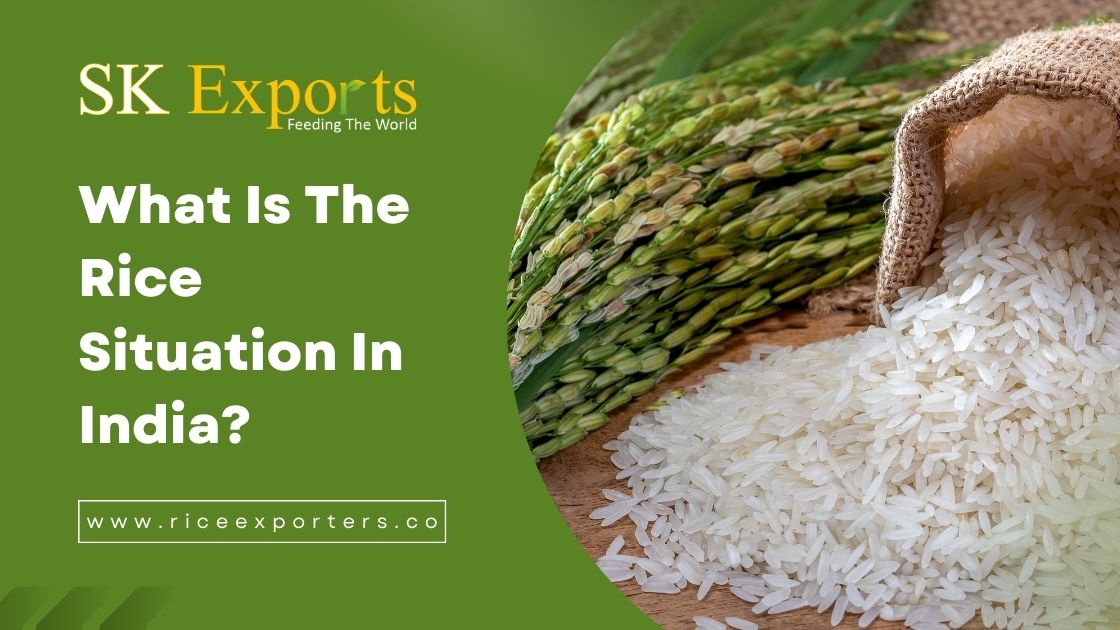Introduction:
Rice, often termed the “grain of life” in India, holds a revered status in the country’s cultural and agricultural landscape. This article endeavors to explore the intricate tapestry of rice production, consumption patterns, socio-economic impact, government interventions, market dynamics, and avenues for innovation within India’s rice sector.
Understanding India’s Rice Production:
India’s diverse agro-climatic conditions, fertile lands, and centuries-old agricultural traditions have fostered a robust rice cultivation ecosystem. The country boasts a vast array of rice varieties, each reflecting the unique cultural heritage of its region. From the fragrant Basmati rice of the northwestern plains to the resilient Sona Masuri of the southern Deccan plateau, India’s rice cultivation is as diverse as its people.
| Region | Main Rice Varieties | Annual Production (Million Metric Tons) |
|---|---|---|
| North | Basmati, Pusa Basmati | 30 |
| South | Sona Masuri, Ponni | 45 |
| East | Swarna, IR36 | 50 |
| West | Kolam, Ambemohar | 25 |
Challenges in Rice Cultivation:
Despite its agricultural richness, India faces a myriad of challenges in rice cultivation, ranging from environmental factors to socio-economic constraints. Climate change-induced erratic weather patterns, depleting groundwater levels, soil degradation, and pest outbreaks pose formidable hurdles to farmers. Additionally, smallholder farmers, who form the backbone of Indian agriculture, grapple with inadequate infrastructure, limited access to credit, and volatile market prices, exacerbating their vulnerability.
| Challenges | Impact |
|---|---|
| Erratic weather patterns | Reduced yields, crop losses |
| Depleting groundwater levels | Increased dependence on rainfed agriculture, risk of drought |
| Soil degradation | Decline in soil fertility, erosion |
| Lack of access to credit | Limited investment in inputs, technology |
| Volatile market prices | Uncertain income, financial instability |
Impact on Farmers:
For millions of smallholder farmers across India, rice cultivation isn’t merely an economic activity but a way of life deeply intertwined with tradition and identity. However, the harsh realities of farming, including crop failures, debt traps, and lack of institutional support, often push them into a vicious cycle of poverty and vulnerability. Addressing these challenges is imperative not only for farmer welfare but also for ensuring the nation’s food security and socio-economic stability.
| Farmer Impact | Description |
|---|---|
| Debt traps | High input costs, low returns lead to borrowing at high interest rates |
| Crop failures | Loss of income, inability to repay loans, food insecurity |
| Lack of institutional support | Limited access to government schemes, agricultural extension services |
| Socio-economic vulnerability | Poverty, inability to invest in education, healthcare |
Consumption Patterns and Cultural Significance:
Rice occupies a central position in India’s culinary landscape, serving as the staple diet for a majority of its population. Beyond its nutritional value, rice holds immense cultural significance, symbolizing prosperity, hospitality, and communal harmony. Festivals, ceremonies, and social gatherings are incomplete without the presence of rice-based delicacies, showcasing the deep-rooted cultural bonds associated with this grain.
| Consumption Patterns | Description |
|---|---|
| Staple diet | Consumed daily in various forms – plain rice, biryanis, pulavs |
| Festive delicacies | Elaborate rice dishes prepared during festivals and celebrations |
| Symbol of prosperity | Offered to guests as a gesture of hospitality and abundance |
Government Initiatives and Policy Interventions:
Recognizing the pivotal role of rice in India’s food security and rural livelihoods, the government has launched several initiatives and policy interventions to support farmers and enhance agricultural productivity. The National Food Security Mission (NFSM), Pradhan Mantri Krishi Sinchayee Yojana (PMKSY), and Rashtriya Krishi Vikas Yojana (RKVY) aim to promote sustainable farming practices, improve irrigation infrastructure, and provide financial assistance to farmers.
| Government Initiatives | Objectives |
|---|---|
| National Food Security Mission (NFSM) | Increase rice production, ensure food security for all |
| Pradhan Mantri Krishi Sinchayee Yojana (PMKSY) | Enhance irrigation efficiency, promote water conservation |
| Rashtriya Krishi Vikas Yojana (RKVY) | Strengthen agricultural infrastructure, provide financial support to farmers |
Market Dynamics and Export Potential:
India’s rice market extends beyond its borders, with the country being a significant player in the global rice trade. Basmati rice, renowned for its aroma and long grains, commands a premium in international markets, particularly in the Middle East and Southeast Asia. Additionally, non-Basmati varieties like parboiled rice and broken rice cater to diverse consumer preferences, further expanding India’s export potential.
| Market Dynamics | Description |
|---|---|
| Basmati Rice Exports | Premium quality rice exported to Middle East, Southeast Asia |
| Non-Basmati Varieties | Parboiled rice, broken rice cater to diverse markets |
| Export Potential | Opportunities for value addition, quality improvement |
Opportunities for Innovation and Sustainable Practices:
Innovation and sustainability are key to overcoming the challenges faced by India’s rice sector. Adopting modern agricultural technologies such as precision farming, drone surveillance, and biotechnology can optimize resource utilization and mitigate environmental risks. Furthermore, promoting organic farming, agroforestry, and farmer producer organizations (FPOs) can enhance farmer resilience and foster inclusive growth.
| Opportunities for Innovation | Description |
|---|---|
| Precision Farming | Optimize inputs, reduce wastage, improve yield and quality |
| Organic Farming | Environmentally friendly, reduce chemical usage, cater to niche markets |
| Farmer Producer Organizations | Collective bargaining, access to markets, value addition |
Conclusion:
The rice situation in India embodies a complex interplay of tradition, innovation, challenges, and opportunities. While the sector faces formidable obstacles, concerted efforts by all stakeholders can pave the way for a sustainable and inclusive rice ecosystem. By embracing technological advancements, strengthening policy frameworks, and preserving cultural heritage, India can ensure a prosperous future for its farmers and secure food for generations to come.
